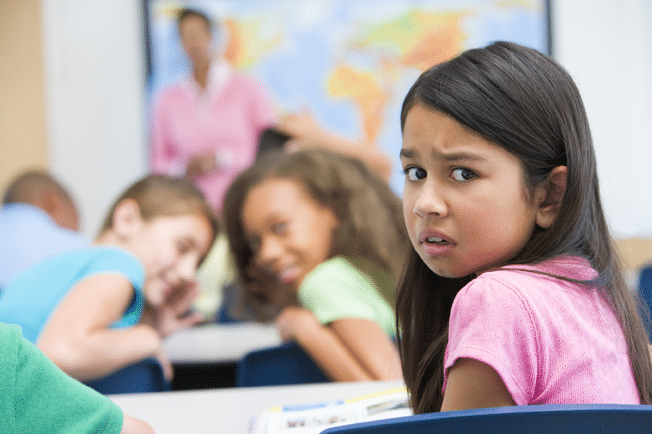
When students fail to demonstrate the critical classroom behaviors or the peer-to-peer social skills, they often display certain patterns of problem or inappropriate behavior. In order to effectively teach social skills to replace problem behaviors, it is useful to understand the types of inappropriate behaviors these students typically exhibit in various social situations.
Withdrawn Behaviors
Students who have withdrawn behaviors typically deal with social stresses in their environment by exhibiting fright, flight, or passive responses. They often react by not reacting. When confronted by critical classroom skill deficits or peer-to-peer social interaction problems, these students are likely to withdraw or passively accept responsibility even when they are not responsible for the problem. They also may fail to assertively address the problem situation.
Students with withdrawn behaviors often:
- Lack effective conversation skills.
- Do not know how to express feelings and desires.
- Do not deal effectively with stress and fear.
- Is unable to make decisions and solve problems.
Immature Behaviors
Students who have immature behaviors respond to social problem situations with behaviors that are not physically or verbally age appropriate. Students demonstrating immature behavior patterns may cry, argue, pout, blame others, or deny the existence of a problem. The distinguishing aspect of these students’ actions is that these behaviors may have been expected, or at least tolerated, at an earlier stage in their development. For example, a two-year-old may be expected to respond to questions of responsibility by insisting that “someone else did it.” A student in fifth grade would be expected to accept responsibility for his or her actions and not blame others. Or a preschool student who is denied access to free time may respond by crying and rolling around on the floor. This behavior would be viewed as immature and highly inappropriate when displayed by a sixth-grader. The types of immature behavior exhibited may resemble behavior that could be considered aggressive (pushing, name calling, temper tantrums) or withdrawn (refusing to talk to the teacher, denying responsibility). The defining characteristic of immature behavior, however, is that the student engages in behaviors that might be expected or tolerated in younger children.
Students with immature behaviors often:
- Respond inappropriately to teasing and failure.
- Are not competent in sharing and playing with others.
- Respond inappropriately to group pressure (e.g., other students “press this child’s button”).
Aggressive Behaviors
Students who have aggressive behavior often display hostile, acting out types of behaviors. These behaviors are often the most visible and, in most cases, the easiest to identify. The aggressive student may react to problem social situations through either verbally aggressive acts, such as shouting, threatening, name calling, or overt denial or physically aggressive behavior such as pushing, hitting other students, or throwing materials or other objects in response to the problem situation. Because aggressive behavior is often the most
visible of the three types of behavior problems, it is the most frequently cited as the type of social behavior in need of remediation through social skills training.
Students with aggressive behaviors often:
- Are not able to control anger.
- Fail to avoid conflicts with others.
- Are not able to negotiate successful and positive social interactions with others.
Responding to Student Behavior Types When Teaching Social Skills
The purpose of identifying the types of inappropriate behaviors the student currently displays is to guide how the social skills instruction will be carried out. Students who exhibit each of these types of problem behavior will typically behave differently from one another in the training sessions. For example, an aggressive student may react quite differently to accepting the answer no than the immature or withdrawn student. The aggressive student might lash out while the immature student might pout or cry and the withdrawn student might simply withdraw from social interaction when told no. While all three students need effective instruction in learning the skills necessary to deal with being told no, instructional strategies may vary when the social skills are taught.
Learn more about how to teach social skills to replace problem behaviors in Teaching Social Skills (https://www.exinn.net/teaching-social-skills-2/) and in A Collaborative Approach to Teaching Social Skills (https://www.exinn.net/a-collaborative-approach-to-teaching-social-skills-2/).
